Wandering through a fragrant garden is such a treat, so here we outline how to design a perfumed native garden.
Have you ever wondered why some plants have perfumed flowers while others don’t? There has to be a reason.
Why do plants have fragrance?
Plants, like other organisms that have become adapted to their natural environment, don’t waste energy unnecessarily. And producing the complex chemicals involved in perfume production is a definite energy consumer.
Most of the time it’s to do with the effective procreation of the species. Pollinators are attracted to flowers for a variety of reasons. It might be the colour of the flower It might be nectar produced in the flower. And it might be the scent.
The more efficient a plant is in attracting pollinators, the more likely will be fertilization and production of seed and the more secure will be future generations.
The attraction of a particular perfume, however, depends on who (or what) is doing the smelling. Most people can appreciate the aroma of a Boronia but, in producing their scents, plants are not actively trying to attract humans. So it shouldn’t be a surprise to find that some smells are anything but pleasant.


Grevillea leucopteris, at Australian Botanic Garden Mt Annan, images Heather Miles
Unpleasant perfumes – to humans!
Consider Grevillea leucopteris, a spectacular plant native to the south west of Australia. This is a truly magnificent thing. It is a shrub to about 2.5 metres high with attractive grey-green divided foliage and, in winter and spring it holds large racemes of white flowers on tall stems above the main bulk of the plant.
Unlike many species from the south west it can be grown reasonably well in humid east coast areas of Australia. So, why haven’t you heard of it?
Perhaps its common name of “Old Socks” will give you a clue ….although if your socks smell like the flowers of this plant, an urgent visit to a podiatrist would be in order.
To be fair, the aroma from G. leucopteris is not going to cause your neighbours to move out….let’s just say that it’s just not the ideal plant to place outside the bedroom window.
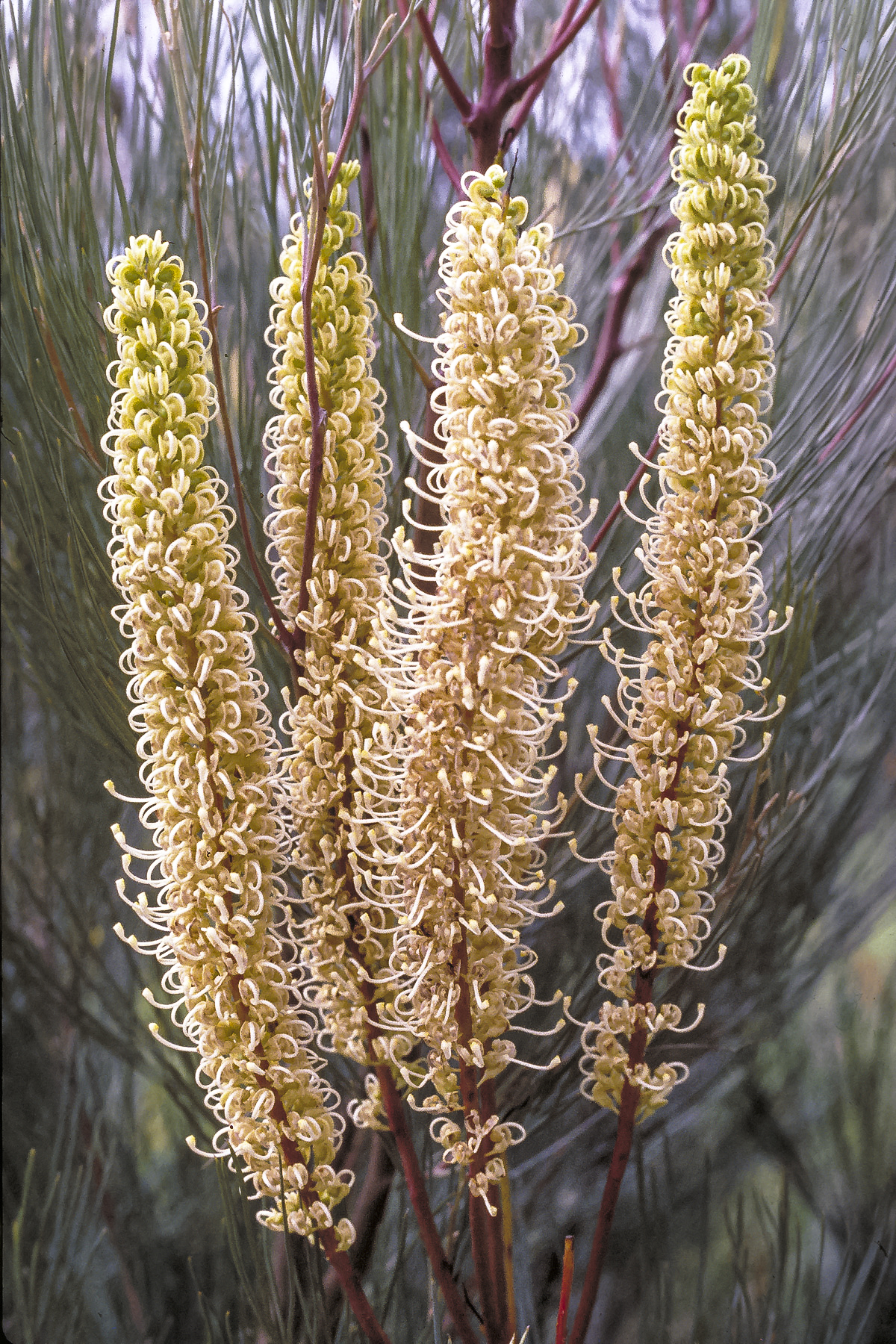
Neither is G. candelabroides, a similar plant with similar odoriferous properties…but, no one can deny that these are perfumed plants.
The perfume of Grevillea candelabroides is not likely to be in demand by cosmetics’ manufacturers!
There are, of course, plants with far more off-putting aromas…..some species have evolved to be pollinated by blowflies and I don’t think further elaboration on the smells produced by these is either necessary or desirable!
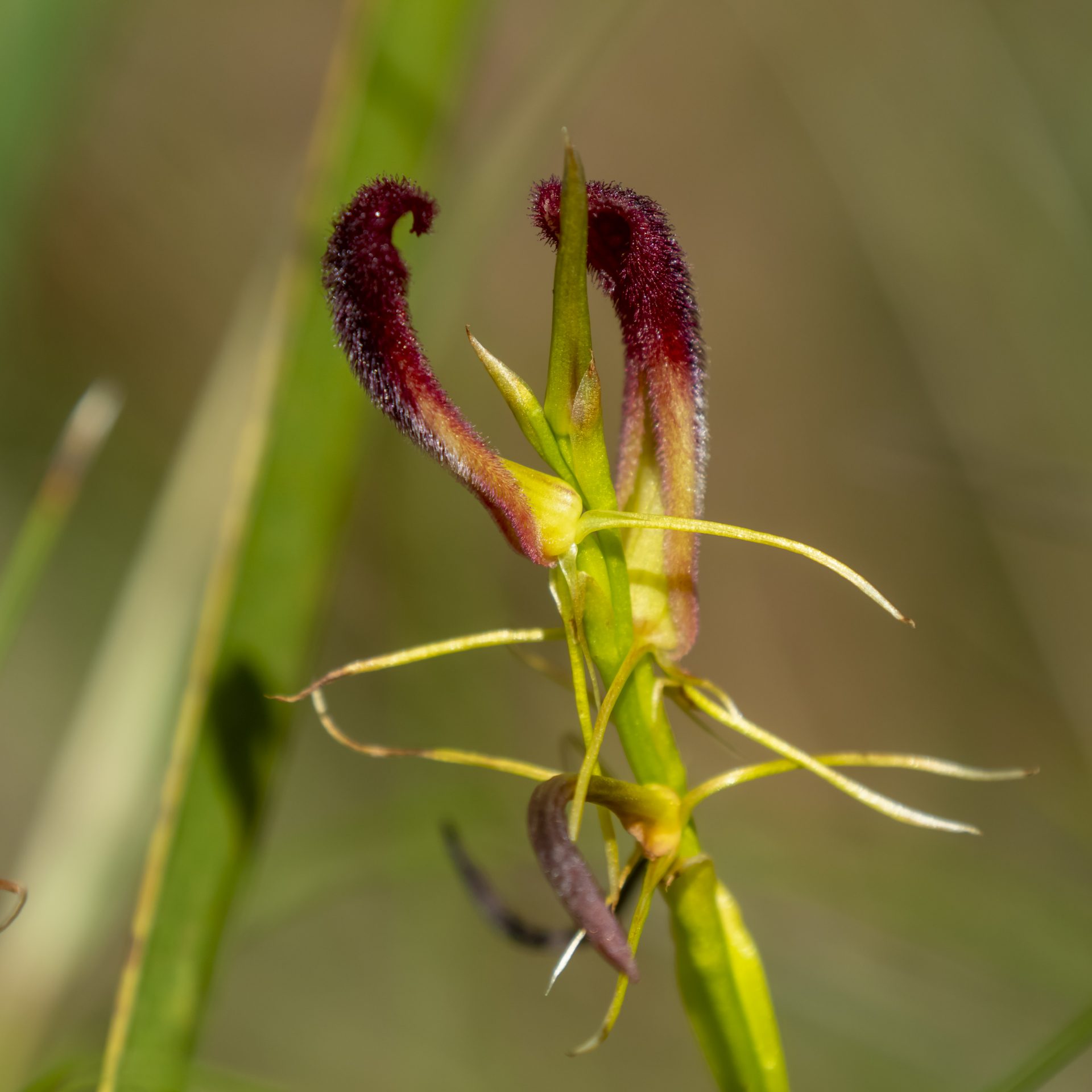
Even more bizarre are some of the native orchids. Species in the genus Cryptostylis, for example, emit a scent which is not detectable by humans but which is the male ichneumon wasp’s ultimate sexual fantasy….so much so that it mistakes the orchid flower for a female wasp.
For its trouble, it gets dabbed with pollen by the flower and finally exits with a feeling that the whole experience was somehow lacking in a vital ingredient.
Perfumed plants for the garden
Fascinating though these X-rated aspects of Australian plants may be, it’s the sweet smelling plants that are of most interest in gardens.
Boronias
The most famous of Australia’s perfumed plants is Boronia megastigma, commonly known as the “Brown Boronia”. This plant has one of the truly great perfumes of the world. It’s a particularly powerful aroma as a visit to any native nursery in spring will confirm…the scent pervades the entire area.
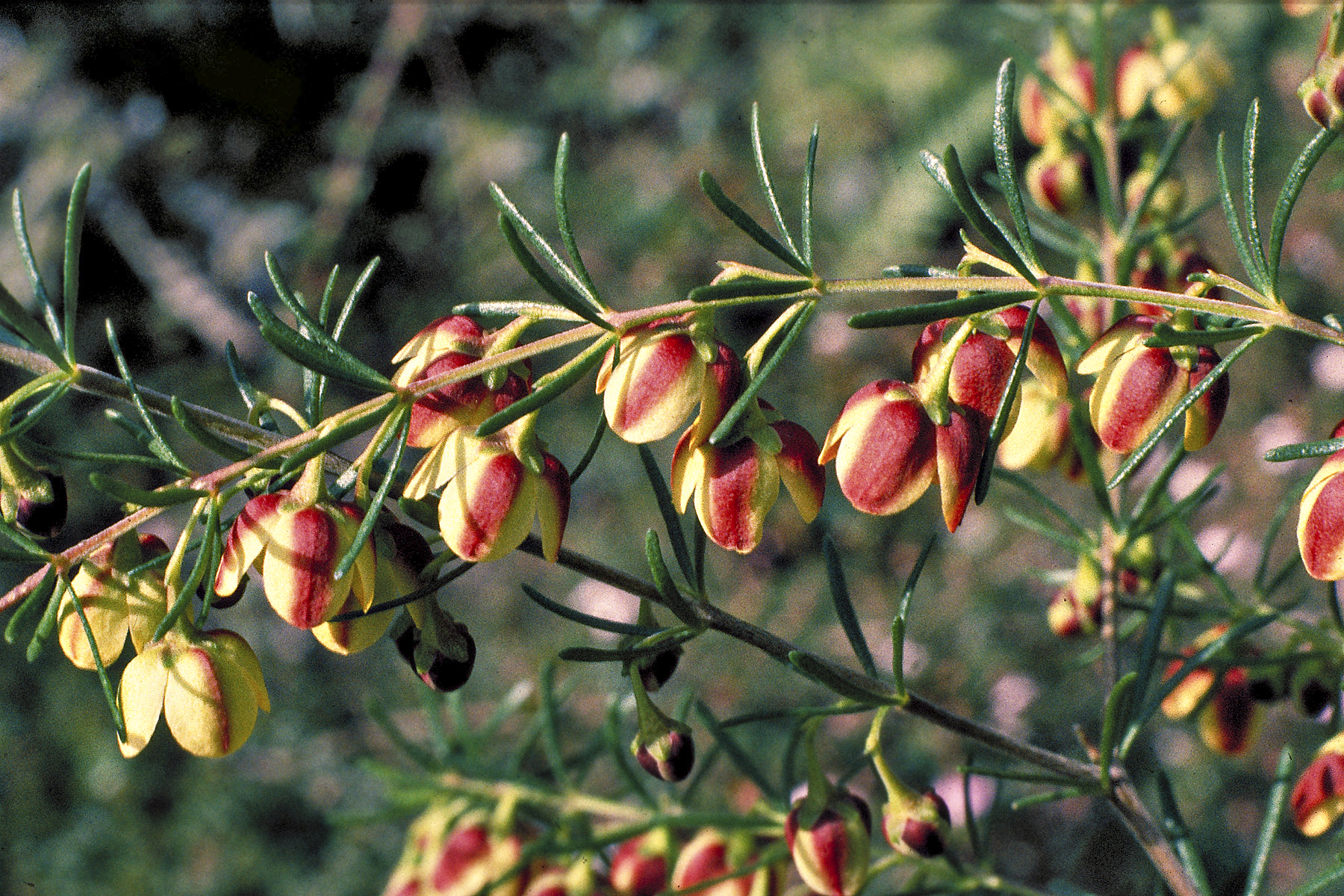
Actually the common name is a bit misleading as forms with different coloured flowers are now commonly available.
All have the same perfume and include “Lutea” (yellow), “Harlequin” (striped red/yellow) and “Chandleri” (burgundy).
There’s also a compact form with brown flowers known as “Heaven Scent”.
In cultivation B. megastigma is a bit unreliable, particularly in humid areas where it’s probably best kept in a pot. It requires moist but well drained conditions. It’s best not too expect too much of it and if you can make it last for more than a couple of seasons you are doing well.
A number of other boronias are claimed to have perfumed flowers but these are nowhere near as pungent as B. megastigma. The beautiful B. floribunda is said to have a delicate perfume but not everyone (myself included) can detect it.
Sydney’s “Native Rose” (B. serrulata) is in a similar category.
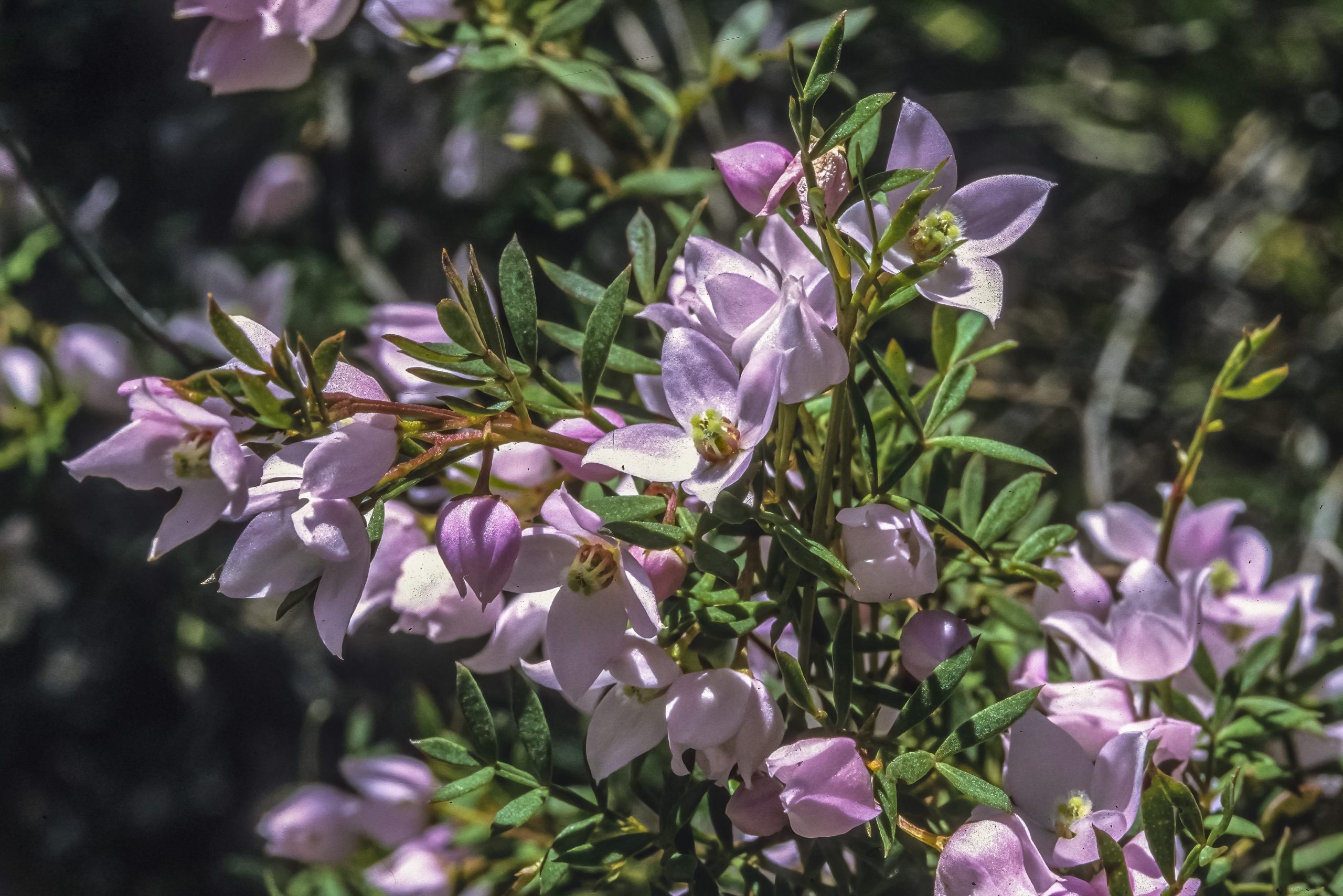
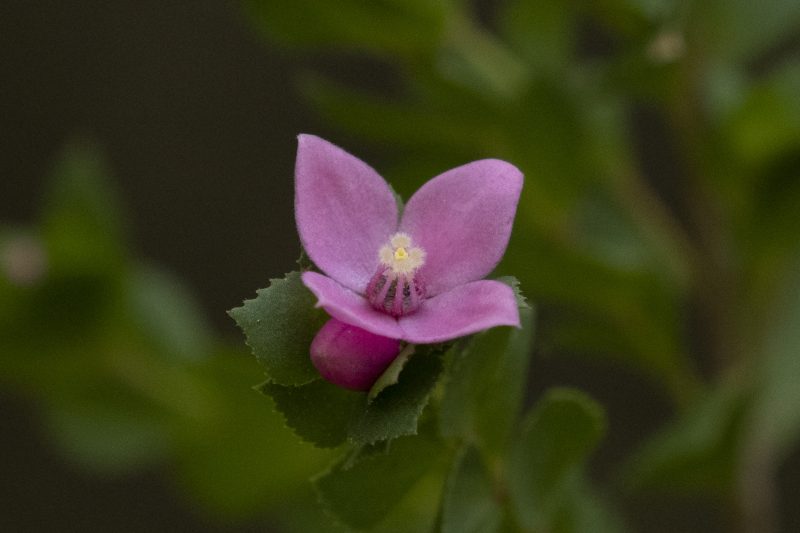
Jasmines
Another group of plants with an outstanding perfume are the jasmines. These, of course, are well known through a number of exotic species, particularly the vigorous Jasminum polyanthum. Australia, however, has a number of native species which smell just as good.
This native jasmine, Jasminum suavissimum, is a hardy plant with a very attractive perfume.
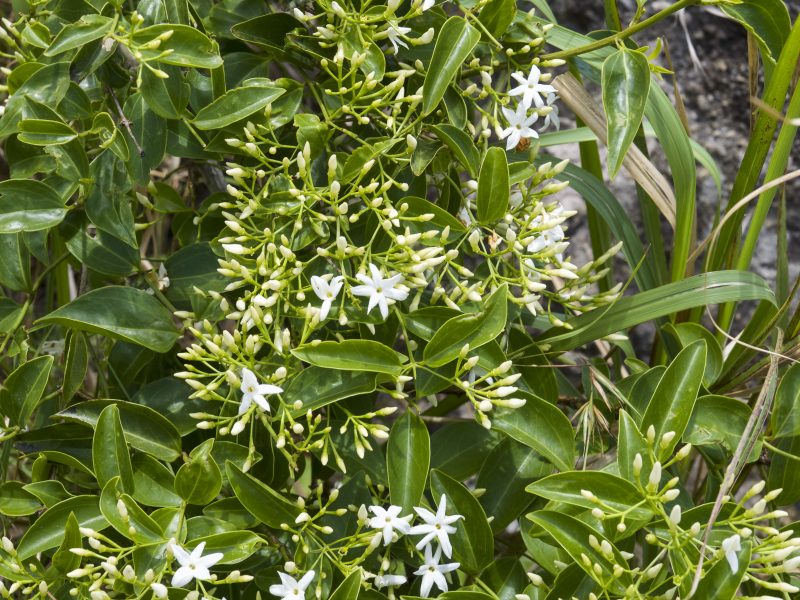

J. suavissimum is native to northern NSW and southern Queensland and is becoming popular in cultivation, although you will probably have to search for it. It is a vigorous twiner but it’s not a rampant grower. It will twine around the branches of other plants if given the opportunity. But it also grows as a shrub where it will reach about 1 metre high and wide.
This is a wonderful species. The flowers appear mainly in summer and autumn and you can detect the aroma throughout the whole garden, particularly in the evening.
Native frangipani
No discussion of perfumed plants would be complete with a mention of the “native frangipani” (Hymenosporum flavum). (It’s not a frangipani of course….apart from the fact that they’re both plants, they’re not even closely related).
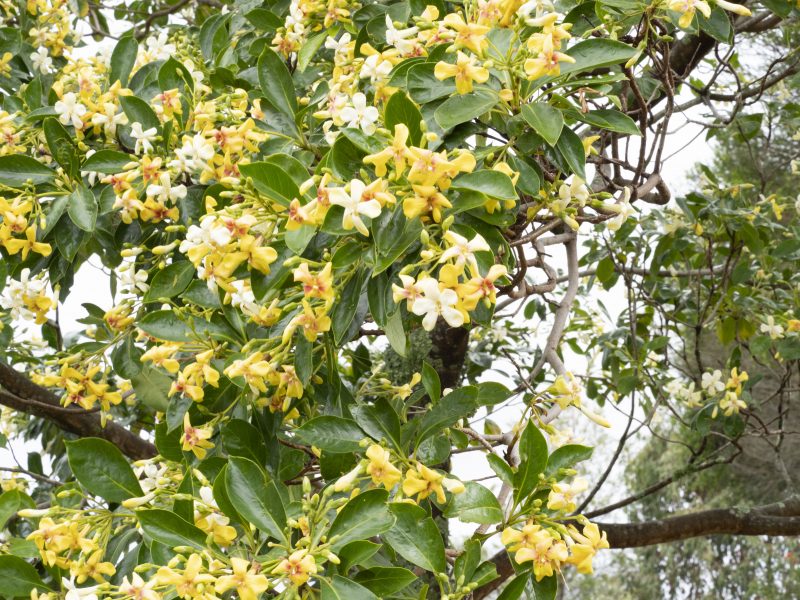


The plant is well known in cultivation in many areas. It is a narrow tree to about 10 metres in its natural habitat but rarely exceeds 5 to 6 metres in gardens. It can be a bit slow in growth and it prefers a position with a reasonable supply of moisture.
The native frangipani, Hymenosporum flavum is an excellent small tree for the garden – the perfumed flowers are a bonus!
Orchids
A number of native orchids, too, have flowers with a delicate perfume. As these are usually grown in pots, they can be brought indoors at flowering time so that the aroma can be appreciated at close quarters. Forms of the natural hybrid Dendrobium x delicatum are worth seeking out.
The aromas of the Australian bush
Perfumed flowers are are not the main features that contribute to the smell of the Australian bushland. The characteristic aroma, which is noticeable particularly after rain, is due to the leaves.
Many plants have foliage with a high content of volatile oils and these can make a very effective contribution to the impact of a native garden.
Myrtles and others
The most well known group in this category are species in the Myrtle family. These include the eucalypts but there are many others worth considering. The genus Backhousia, for example, contains a number of highly aromatic species including B. citriodora which has leaves that are more “lemony” than the lemon tree. In its natural environment, it grows into a medium sized tree to 8 metres or more. But it is usually much smaller in gardens where it appreciates a position with assured moisture.

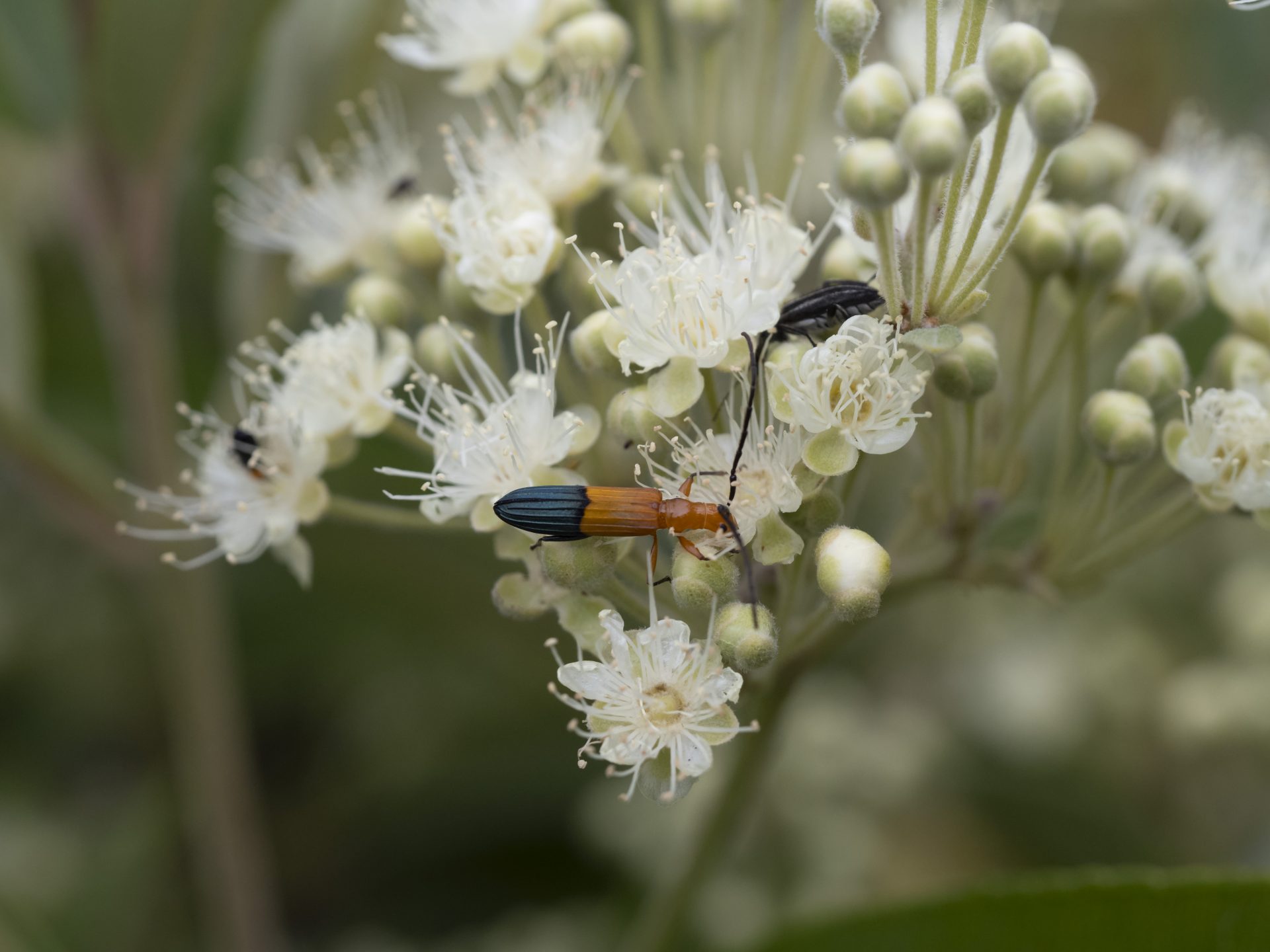
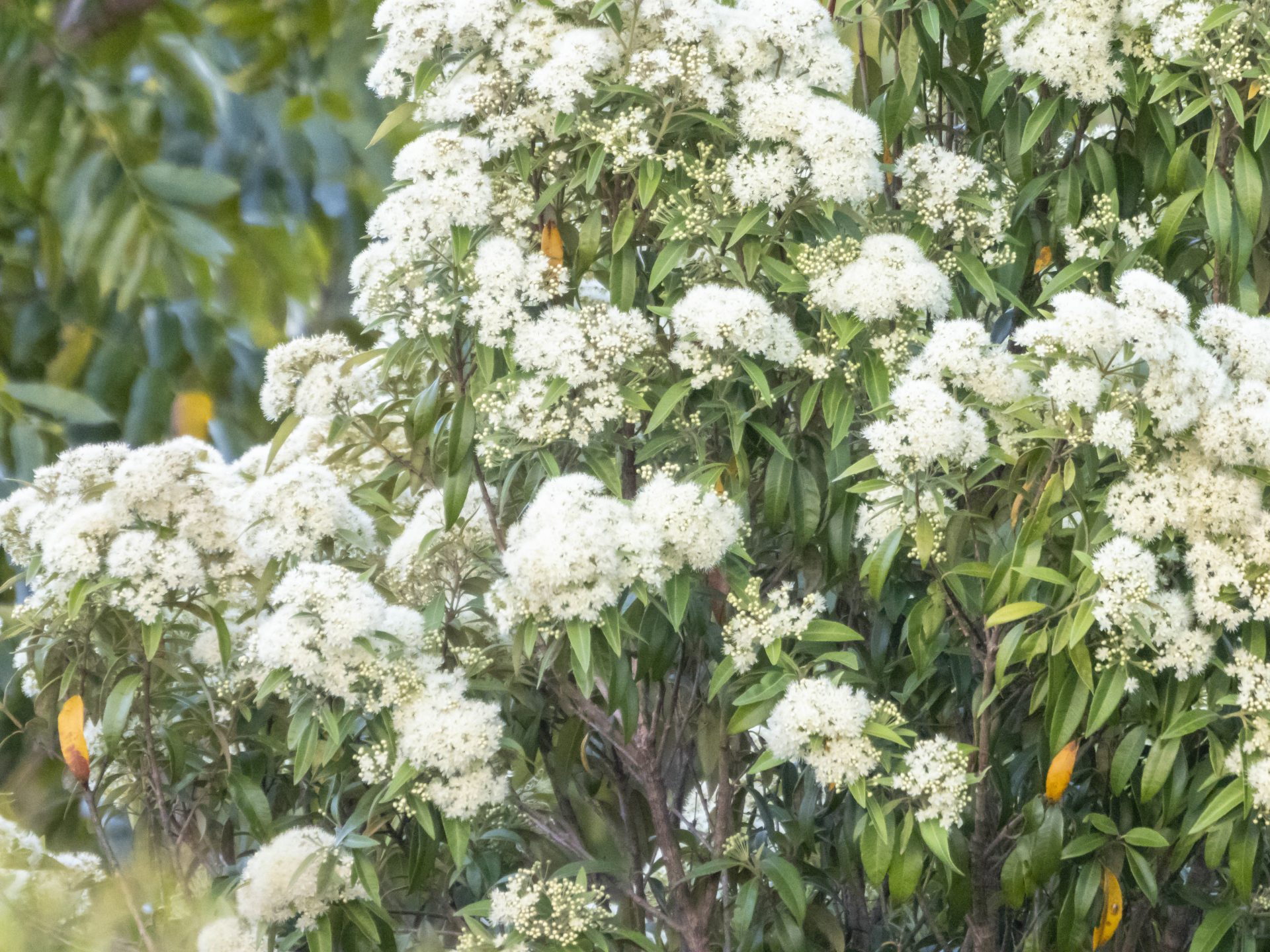
Another interesting Backhousia is B. anisata. Not well known in cultivation, it is probably one for the enthusiasts at the moment.
Many of the boronias (and their relatives) also have a high oil concentration in the leaves and can give off a very strong smell. Some of these can be almost overwhelming and some people find the smell of Zieria smithii, for example, a bit too much. But I like it!

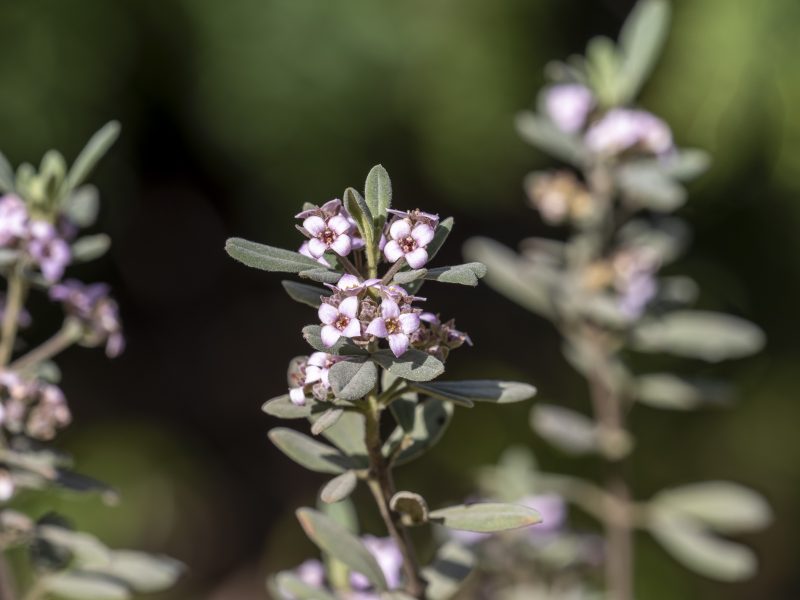
Prostantheras
Perhaps the most useful aromatic plants for garden use, however, are the mint bushes (Prostanthera species). Although there are some mint bushes without aromatic foliage, most of the commonly available species are highly aromatic. Prostantheras are related to the common culinary mint and to herbs such as thyme and sage. Even a light brush against the foliage of these plants will cause the release of a beautiful fragrance.
Prostanthera teretifolia is not well known but is an attractive small shrub with aromatic foliage.
You should have no trouble in finding a good range of prostantheras, even in non-specialist nurseries. You can sample the aroma of these plants by simply brushing your hand through the foliage and then smelling your fingers. An added bonus is their spectacular flowering habit. Most species cover themselves in mauve, purple or white flowers in spring.
Some of those worth considering are P. ovalifolia (purple; 2 metres), P. rotundifolia (purple or pink; 2 metres), P. incisa (mauve; 1.5 metres) and P. teretifolia (lilac; 1 metre). All of these appreciate adequate moisture in a sunny or lightly shaded position.
Mint bushes are generally quick growing but can be short lived (five or six years). They are ideal for quick effect and can be readily replaced, as they are readily propagated from cuttings.
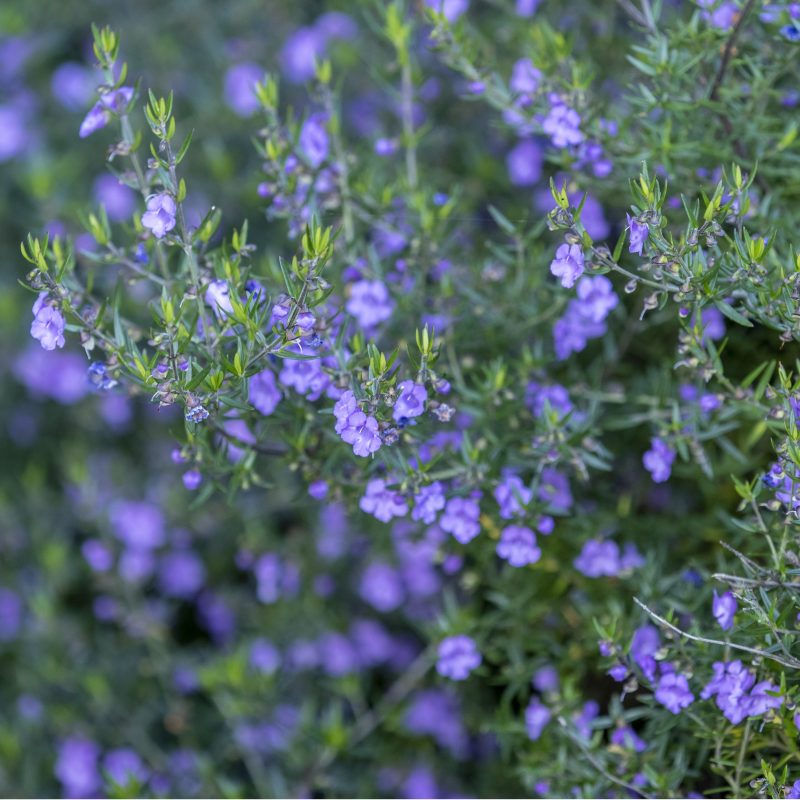


Scents and senses
Sometimes people become obsessed with the visual attractions of a garden and forget that gardens can stimulate other senses. There’s nothing wrong with a spectacular floral display, of course, but it’s probably only in evidence for a few weeks of a year.
Including plants that appeal to touch and smell helps to maintain interest at other times. Once you start looking at plants with these other features in mind, flowers become just one consideration among a host of others.
Oh, and in case you think that all Grevilleas smell like “Old Socks”, try G. vestita. It’s a much sweeter experience with its stunning perfume.

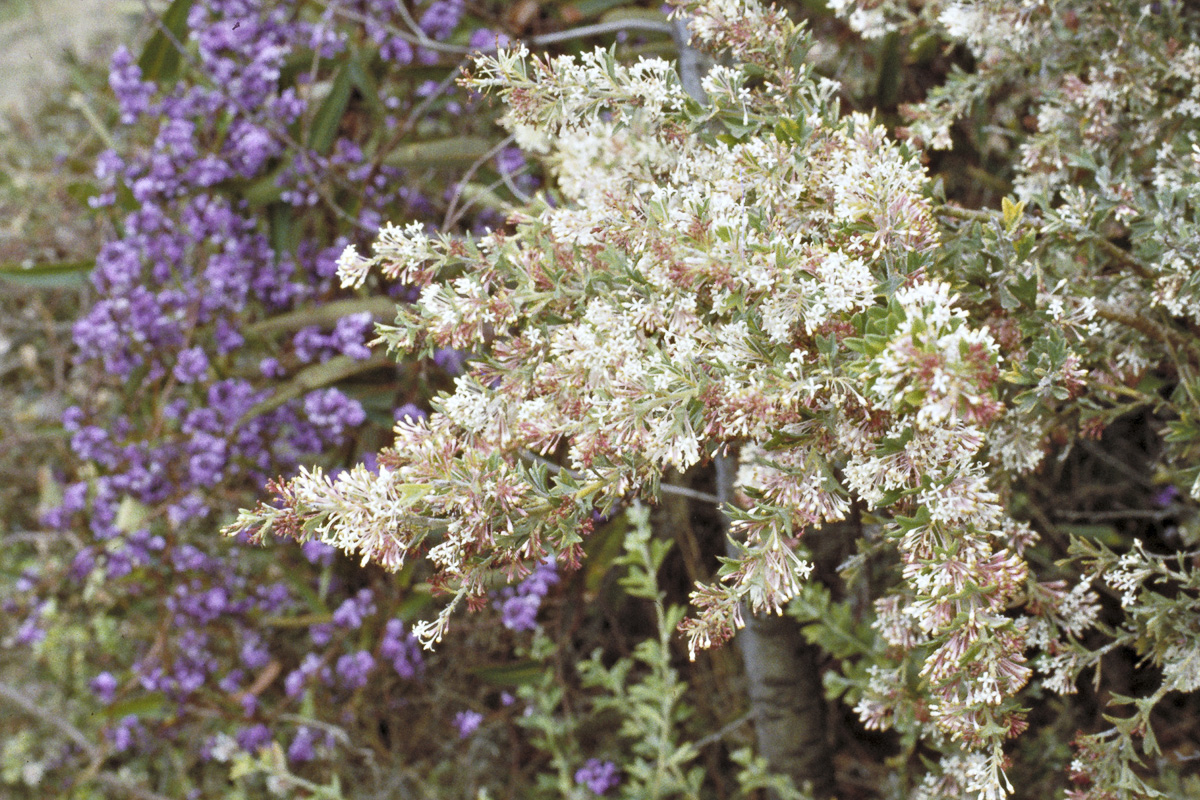
Based on an article published in the November/December 1991 issue of “Gardens and Backyards” magazine.
Brian Walters has been growing Australian plants since the early 1970s. He is a Public Health Engineer and technical writer and obtained his enthusiasm for the Australian flora while working within the water catchment areas maintained by his former employer, Sydney Water. He has been a member of the Australian Plants Society for over 20 years and is currently the newsletter editor for the New South Wales Region of the Society.
 Australian Native Plants Society (Australia)
Australian Native Plants Society (Australia)